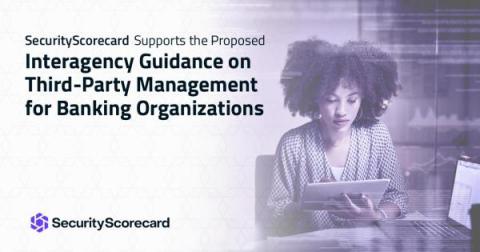Security | Threat Detection | Cyberattacks | DevSecOps | Compliance
Latest News
The Importance of Information Security
How You Should Rank Cybersecurity Vulnerabilities
Creating a Successful Cybersecurity Risk Management Plan
SecurityScorecard Announces Plan to Train & Certify 25,000 Supply Chain Risk Professionals
Cybersecurity threats are on the rise. Over the past year, we’ve observed a 148% increase in ransomware attacks and an 85% increase in phishing attacks targeting remote users. Worse still, these attacks are growing increasingly sophisticated, with threat actors using eight or more vectors in the same attack, often deploying multiple vectors within minutes of one another.
SecurityScorecard Supports the Proposed Interagency Guidance on Third-Party Management for Banking Organizations
On July 19, 2021, The Board of Governors for the Federal Reserve System (Board), the Federal Deposit Insurance Corporation (FDIC), and the Office of the Comptroller of the Currency (OCC) released their proposed interagency guidance around third-party risk management. SecurityScorecard submitted comments in response to the proposal urging the agencies to include the adoption of security ratings to mitigate the cyber risk to financial institutions introduced by third-party vendors and suppliers.
4 Most Common Causes of Data Leaks in 2021
Internal vs. External Vulnerability Scan: What Are the Differences?
What is Your Security Strategy for 2022? 3 Ways to Keep Up With the Threat Landscape
Digital transformation was well underway before the pandemic and in order to enable remote work and e-commerce, organizations have been adding new digital offerings at an unprecedented rate. Businesses are growing increasingly reliant on digital infrastructure with the expectation to secure a shifting cloud while managing a hybrid workforce and a growing IoT.





